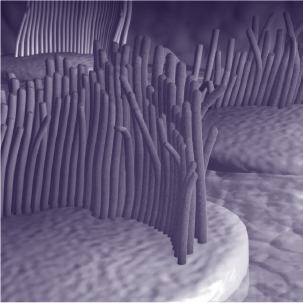Ver pagina en: English | Español
Damage Can Happen Slowly or All at Once
Hearing sounds for too loud and too long builds up the damage to our ears. Like sun exposure or air pollution, the negative effects can show up gradually, over time, according to the CDC. Damage to hearing can also happen from a single instance of loud sound, like sitting too close to speakers at a concert.
Some professions are especially at risk of hearing loss from excess noise:
Service members and veterans who have been exposed to artillery, machinery, heavy transport
Musicians and people in the music industry, who are four times more likely to develop hearing loss and 57 percent more likely to develop tinnitus
Landscapers, construction workers, and baristas who operate loud equipment
People who work in transportation such as subways, trains, and airplanes
Bartenders, fitness instructors, and emergency workers—anyone regularly exposed to sounds that are too loud, or over 70 decibels
And We Live in a Noisy World
There are federal regulations to protect most workers, but what about noise exposure outside the workplace?
The sensory hair cells in our inner ears are like a lawn of thick grass. Every time they’re exposed to loud sounds, the lawn gets walked on. The blades bend under the pressure, then bounce back. As loud or extended noise keeps trampling the grass, not all the grass springs up again. The grass dies, and the lawn gets bare spots. In the same way, noise damages our sensory cells, and hearing damage occurs—which can include not only hearing loss but also tinnitus (ringing or buzzing in the ears) or hyperacusis (sensitive to everyday sound levels).
We can fill up our daily sound dose by doing everyday things, like attending a noisy gym class, using a coffee grinder, and commuting by subway. Amusement parks, sports arenas, and movie theaters are loud, but school events and birthday parties can be, too.
This doesn’t mean we can’t attend a wedding or a party, of course—we just need to be mindful of the sound level, carrying and using earplugs and taking quiet breaks to rest our ears. We count our steps, calories, grams of sugar and salt, hours of sleep we get, and ounces of water we drink. We follow healthy habits every day and aim to enjoy things in moderation. It’s the same with our hearing.
Reducing the volume even a little can go a long way toward protecting our ears for the long term. Every 3 decibel increase doubles the sound intensity, but every 3 decibel decrease cuts it in half.
Let’s listen responsibly. Learn about safe decibel levels and how to protect hearing.




